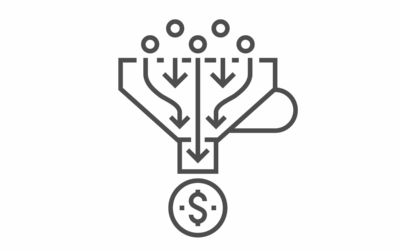Search is the backbone of the internet. According to research, 93% of global web traffic is driven by Google alone. So, if your website isn’t optimized to appear in search engine results, called SERPs, the chances of users discovering your site are next to zero. In short, you need good search engine optimization (SEO).
The goal of a search engine, be it Google or Bing, is to provide users with quality content relevant to their search query. However, search engines can’t provide content they can’t find; therefore, the goal of SEO is two-fold:
- To create high-quality and relevant content for users
- To make that content easy to find and understand for search engines
From these goals, we get the two main components of SEO – technical SEO and content SEO. The trick to a good SEO strategy is striking a balance between the two.
Technical SEO:
Technical SEO makes your website easier for search engines to find and understand. Sites that are well organized, easy to navigate, and clearly labeled will rank higher than sites full of broken links and dead-end pages.
Group similar pages together.
Links are an essential part of an SEO strategy. When one page links to another, it signals to search engines that these pages are somehow related. Links also help build authority, an important factor in search ranking. The more inbound links (links directing to a page) a page has, the more authority it has in the eyes of search engines. By linking similar pages together, like blog posts that cover the same topic, sites can boost the authority of their pages internally.
Have a site map.
Over the years, websites have grown in both size and complexity. But search engines only have fractions of a second to scan a site, a process called crawling and indexing. Businesses can use a site map to help search engines navigate sites more efficiently. A site map is a text file that lists all of the pages on a website in hierarchal order; this tells the search engine everything on the site and what pages are more important than others.
Optimize your meta tags.
Search engines rely on meta tags to understand what a website is about and its content. These are small bits of back-end HTML code that act as a labeling system. The two meta tags people are most familiar with are the title tag and the meta description tag. These make up a page’s SERP result. While they are not used as direct ranking factors, they help with SEO by providing prospective users with a summary of what they will find on the page. Best practices for these tags include using a page’s primary keyword, sticking under character length and being concise and descriptive.
Content SEO:
Content SEO focuses on creating high-quality, search-relevant content in order to rank higher in SERPs. It involves understanding what users are searching for and tailoring content to fit those needs.
Learn how users are searching.
How businesses think they are searched for and how users actually search for them don’t always match up. Search centers around the user, so businesses need to design their content around what users want first and weave in their message second. Keyword research tools like SEM Rush and Yoast reveal the most popular search phrases for a topic or keyword, along with common variants. Google Search Console shows what keywords and phrases users are inputting to land on your site. Ideally, there should be a similarity between the two.
Optimize for keywords.
When people first learn about keywords, their first instinct is often to stuff as many keywords as possible into a piece of content, hence the term “keyword stuffing.” In truth, this practice is penalized by search engines and isn’t recommended for improving SEO. Pages should only contain one to three keywords relevant to the topic at hand, and they only need to be used every 200 words or so. It is important that keywords fit into the natural flow of the content. Search engine algorithms have gotten better at understanding natural speech and are better at spotting keywords that have been shoehorned into content.
Search algorithms will continue to change with the aim of providing better content for users, but so long as website stick to the basic principles of SEO, rankings will improve in the long term no matter what.


